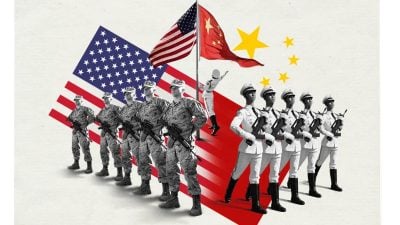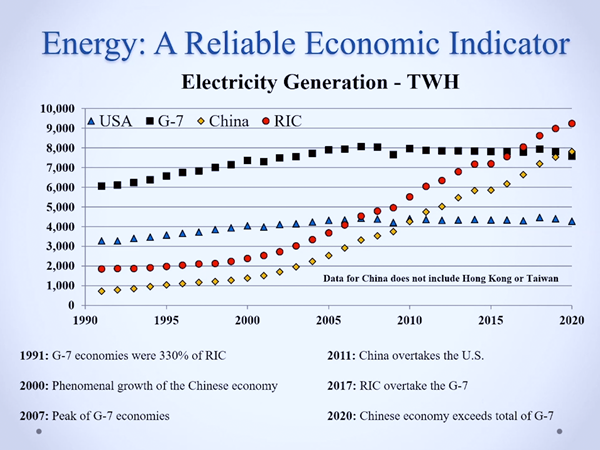The US Is a Financial Parasite on a Robust China. The ‘Silk’ Road Will Delouse the Dragon
from Russia Insider:

The old Silk Road was an ancient trade route that tied together the Roman Empire and China, where silk came from. It was so called because silk was at the heart of the trade. Silk went to Europe, gold and luxury goods went back. Silk was important because silk garments worn against the skin prevented body lice, and wealthy Roman citizens were ready to pay for silk with gold, because the alternative was watching their wives and concubines scratch themselves. In addition to wearing silk, the Romans built baths, along with aqueducts to supply them. The Roman delousing procedure involved getting all of your body hair plucked (ouch!), oiling yourself up, working up a sweat in pretend-wresting, then scraping your skin using a sickle-shaped implement called a strigil. Then they would soak in a hot bath, don silk undergarments, and remain itch-free until the next bath day.
The Romans spent so much gold on the Chinese silk that they didn’t have enough left to pay their legionnaires, resulting in numerous revolts and revolutions, and eventually had to debase their currency, which, as the end of the Empire grew near, contained mostly copper. The gold ended up in China, where it caused no end of corruption, because imperial officials, who received the gold in exchange for the silk, which they obtained from the peasantry that raised the silkworm, used it to enrich themselves rather than the imperial treasury. After experimenting with executing corrupt officials, it was discovered that they would always bury their treasure ahead of time, so that their families could recover it after their execution, and so Plan B was to execute the officials’ entire families. This, in turn, caused a dire shortage of imperial officials. Thus, the silk trade caused two empires to collapse—the Roman and the Chinese—the former due to a shortage of gold, the latter due to its surplus, but all because of a certain skin parasite.
The original Silk Road, established between the Han dynasty in China and the Roman Empire in Europe around 130 BC, had the Sogdians act as the go-betweens. Eventually the Sogdian empire collapsed, and the Sogdians were replaced by Khazarian Jews, who also eventually came to a sticky end around 965 AD at the hands of Sviatoslav, prince of Kievan Rus. Later, a technological breakthrough in ocean sailing ships obviated the need for a land-based trade route and caravans spanning the Eurasian continent came to an end.
But now the Silk Road is being resurrected as the New Silk Road, which will again connect China with Europe, with the European Union in place of the Roman Empire and with the Russian Federation in place of the Sogdians or the Khazars. It will no longer have much to do with silk, since there are now far more effective ways to deal with lice than silk underwear, a working-over with a strigil and a plunge in the caldarium. But, just as before, the purpose of the New Silk Road will be to control the infestation of a certain parasite—or, in this case, an entire country of parasites: the United States.
Some people say that the US is the world’s largest economy, but I beg to differ. Let’s do some simple math to come up with a reasonable GDP deflator for the US economy. An appendectomy (the most common operation performed) costs around $60,000 in the US. It costs around 8000 rubles, or $123 in Russia. The difference is a factor of 60,000/123 or around 500. Assuming that everything else in the US—not just medicine but also education, legal services, professional services, real estate, defense spending, election campaigns and all the other American swindles and rackets combined—is equally ridiculously overpriced, 2019 estimated US GDP is not $21 trillion but just $42 billion, many times smaller than Russia with $1,649 billion.
Some people say that the US is an important part of the world economy with many essential exports. Looking at the US-China trade China makes most of its profits from the export of computers, electrical equipment, footwear, furniture, clothing, plastics and metals, cars, optical and photographic equipment. Meanwhile, the most profitable US exports to China are: soybeans, wheat, animal feed, meat, cotton, metal ore, metal scrap, animal skins, pulp, cigarettes, gold, coal, fuel, rice, tobacco, fertilizer and glass. Vis-à-vis China, the US looks like a typical 19th-century European colonial possession. The US runs a permanent, and very large, trade deficit with China, and just as a colony would be forced to borrow the difference, so does the US. What allows it to be a parasite is that it does so in its own currency, which it can print at will, and to force other countries to invest in it at low rates of interest, all because it has been able to militarily dominate the ocean trade routes and to punish those who refuse to play this game, either financially (by destroying their currencies), politically (by overthrowing their governments and installing ones they don’t get to choose) or militarily (by blowing them up).
Read More @ Russia-Insider.com
Loading...



